
/
RSS Feed
We’ve put together a little trivia podcast game for you on WILDFLOWERS of the KLAMATH MOUNTAINS—that wildly biodiverse and complex corner of northwest CA and southwest OR that has captured our hearts and minds. We thought this game would be fun to play along with as you and your pals drive to the trailhead for an epic mountain adventure, or perhaps as you do the dinner dishes…whatever you’re up to!
Below you’ll find the questions we asked along with links to the answers and images to see the species we’re talking about.
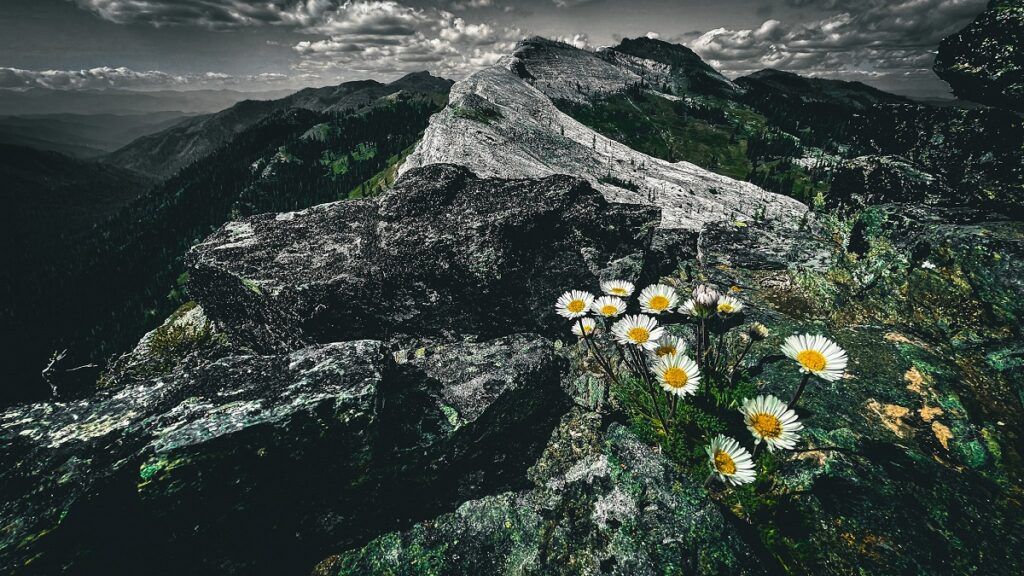
| ROUND 1 |
|---|
| 1. This iconic plant is one of five carnivorous plants known to the Klamath Mountains and the sole member in the family Sarraceniaceae. It supplements its diet by enticing insects inside its long, hollow stem where victims endure a slow death—by incarceration. ANSWER |
| 2. This wilderness area, in the northern Klamath Mountains of southwest Oregon, is named after a rare shrub with beautiful pink flowers in the Ericaceae family. It was first scientifically described by John and Lila Leach in the 1930s. ANSWER |
| 3. This species of oak (yes, they have flowers too!) is endemic to the Klamath Mountains – living nowhere else on Earth. ANSWER |
| 4. This striking (and favorite!) perennial wildflower forms a substantial rosette of fleshy, spoon-shaped dark green leaves. It’s topped with open sprays of bright pink flowers where it grows, frequently, in serpentine rock-gardens across the range. ANSWER |
| 5. The entirely red flowers are the only above-ground part of this plant. This is a Mycotrophic plant, in the heath (Ericaceae) family, that gets its nutrients through intermediary mycorrhizal fungi. ANSWER |
| 6. This parasitic flowering plant taps into the vascular system of its host tree and is often called the “exploding Booger plant.” ANSWER |
| 7. In 2021 the Botany World was taken by storm with the discovery of carnivory in this wildflower which grows in the Klamath Mountains! Among monocots, this species is the only known instance of a carnivory via a sticky-trap mechanism where it secretes a digestive enzyme on its stem to supplement upwards of 2/3 of its diet. ANSWER |
| 8. This riparian plant, in the family Saxifragaceae, probably has the largest leaf of any plant in the Klamath Mountains. ANSWER |
| 9. This vegetation types is one of the most important for Native American cultures across the Klamath Mountains. It is difficult to visit a river bar and not see the legacy of thousands of years of stewardship by the First Peoples in these woodlands. ANSWER |
| 10. These plants’ flowering stalks are an important indigenous basketry material and they arise like a white torch, especially in recently burned areas. ANSWER |
| ROUND 2 |
|---|
| 1. According to our iNaturalist project, Biota of the Klamath Mountains Geomorphic Province, how many species of native orchids can be found here? ANSWER |
| 2. This extremely poisonous plant is native to western North America. It grows 1 to 2 meters tall with a leafy stem resembling a cornstalk in moist soil usually in wet meadows where you can find them by the 100’s. ANSWER |
| 3. This obscure plant, which is part of the rose family, has only three other ancient relatives worldwide. It was first named in 1992 by Dean Taylor and Glenn Clifton when they happened upon it in the eastern Klamath Mountains. ANSWER |
| 4. All 67 manzanita species on Earth are found within the California Floristic Province. How many of these are in the Klamath Mountains—at the northern extent of the California Floristic Province? ANSWER |
| 5. It has been proposed that northwest California and southwest Oregon are at the epicenter of true lilies (genus Lilium) diversity on Earth. These herbaceous flowering plants grow from bulbs, all with large prominent flowers. How many lily species are found in the Klamath Mountains? ANSWER |
| 6. Everyone loves a good blueberry. Vaccinium species, in the Heath Family, are quite diverse in the Klamath Mountains. How many species in the genus vaccinium (bilberry, huckleberry, aka blueberry) are found here? ANSWER |
| 7. This plant is only known from Mount Eddy, the highest summit in the Klamath Mountains where its striking, many-headed flowers have yellow throats and violet lobes. ANSWER |
| 8. The showy part of this beautiful and secretive wildflower with heart-shaped leaves are actually the sepals – it has no petals! ANSWER |
| 9. Common names for this favorite wildflower genus include: pussy ears, cat’s ear, Mariposa lily, and star tulip. ANSWER |
| 10. The seed heads of this high country wildflower are unmistakable and lovingly referred to as Einstein Heads because they resemble a shaggy mass of white hair… or I always thought of them as little white Trufula trees. ANSWER |
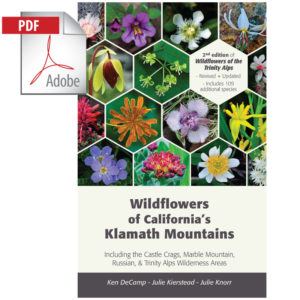
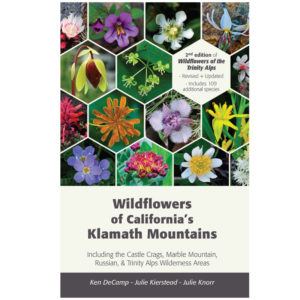
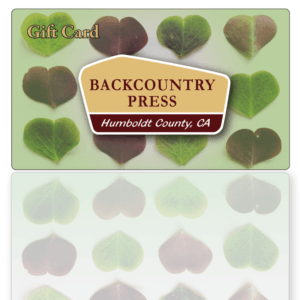
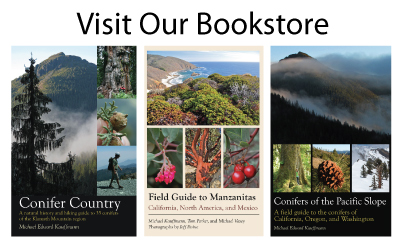
That was fun! I knew quite a few even though I’m not that familiar with the Klamath Mountains – I love trivia! I mostly got the species ID ones, not the “how many species of this are in the Klamath” type of questions, but I still enjoyed it and enjoyed hearing you guys 😁